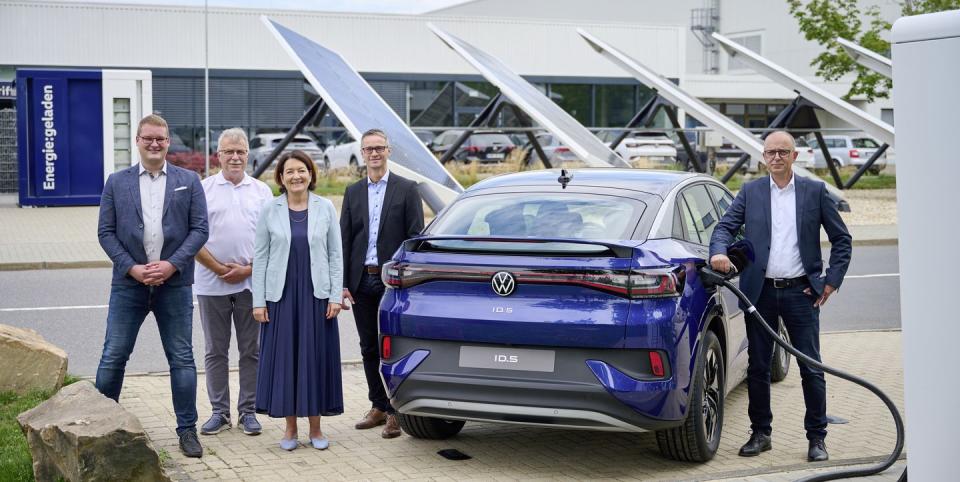VW Reveals Charging Hub That Reuses EV Batteries

VW launches fast-charging hub that uses batteries from ID.3 and ID.4 pre-production vehicles for energy storage.
The new station type is meant to bypass the expensive and time-consuming construction of DC fast chargers.
Audi also uses internal storage so its charging hubs can function without dedicated new grid connections.
In the decade that EV fast-charging stations have been around, they haven't really become much less expensive to build. The amount of work—from obtaining permits to coordinating with the local power company and putting in underground infrastructure—takes months and costs tens of thousands of dollars, which is also why we don't see DC fast chargers installed at many gas stations. In fact, the California Energy Commission says the average total project cost for one DC fast charger is more than $111,000.
One way to bypass the costly and time-consuming installation work is by making fast chargers more or less portable and ready to be installed just about anywhere. They still require a connection to the grid, but not a new one, and no complex underground work. What they do require is energy storage of their own, permitting them to slowly gather energy from an existing grid connection, and then deliver it to EVs at much faster speeds.
Volkswagen is one of several companies working on fast-charging infrastructure that relies on a power storage container (PSC), and it has just opened a station in Saxony, Germany. The container is composed of 96 cell modules, taken from pre-production versions of the all-electric VW ID.3 and ID.4—cars that are usually crushed rather than sold—with a net capacity of 570 kWh.
"With the power storage container, Volkswagen Sachsen is demonstrating a practical, cost-effective and useful case to enable cell modules at the end of their service lives to have a second life," said Karen Kutzner, managing director for finance and controlling at Volkswagen Sachsen.
The prototype charging hub that VW built with reused ID.3 and ID.4 battery packs features four connectors, each offering 150-kW charging speeds. But each 150-kW stall can also be divided into two 75-kW connectors, allowing up to eight cars to be charged at once. VW's prototype plaza draws energy from a photovoltaic source and from the grid, showcasing some variety.
The automaker says this type of station is a cost-effective alternative to traditional DC fast chargers, which require a new transformer station, and could be installed in places where a special grid connection may not be practical or possible, or where the traffic flow may not see all that many cars in a given day to warrant the investment in a high-voltage grid connection with a transformer station.
Audi uses the same concept at its new luxury charging hubs, which will expand after a successful launch in Nuremberg, Germany.
Of course, vehicle batteries aren't free either, so the donor batteries will eventually have to be sourced from an EV recycling program if this type of hub is to achieve scale and cost competitiveness.
"This automotive power bank could be used wherever the capacity of the grid connection is too low but there is demand for powerful charging infrastructure," Kutzner adds. "Innovative ideas like this could provide renewed impetus for the critical buildup of fast-charging infrastructure."


 Yahoo Autos
Yahoo Autos 